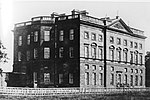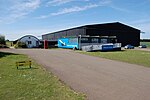East Lothian (UK Parliament constituency)
Constituencies of the Parliament of the United Kingdom established in 1983Politics of East LothianWestminster Parliamentary constituencies in Scotland

East Lothian (; Scots: East Lowden; Scottish Gaelic: Lodainn an Ear) is a constituency in Scotland which returns one Member of Parliament (MP) to the House of Commons of the Parliament of the United Kingdom, elected by the first past the post voting system. The seat is represented by Kenny MacAskill of the Alba Party who was elected as an SNP MP at the 2019 general election, where he unseated the sitting Labour incumbent, Martin Whitfield with a majority of 3,886 votes. Further to the completion of the 2023 Periodic Review of Westminster constituencies, the seat will be formally renamed Lothian East, to be first contested at the next general election.
Excerpt from the Wikipedia article East Lothian (UK Parliament constituency) (License: CC BY-SA 3.0, Authors, Images).East Lothian (UK Parliament constituency)
U153,
Geographical coordinates (GPS) Address Nearby Places Show on map
Geographical coordinates (GPS)
| Latitude | Longitude |
|---|---|
| N 55.9475 ° | E -2.7263888888889 ° |
Address
U153
EH41 4LD , Nungate
Scotland, United Kingdom
Open on Google Maps










